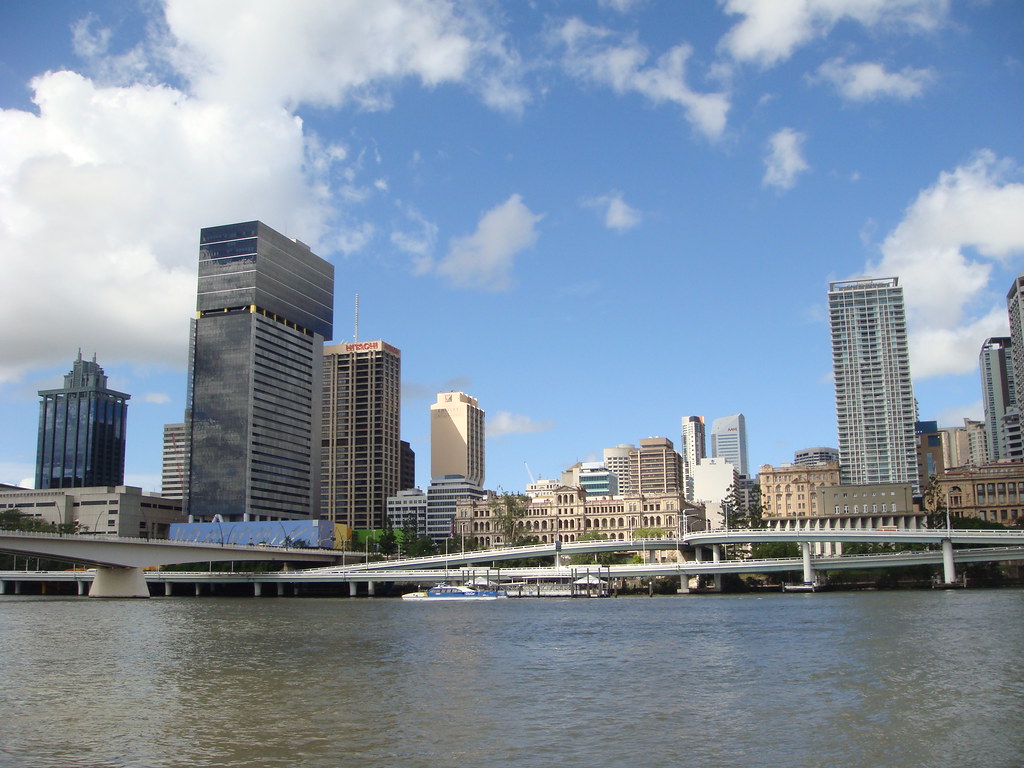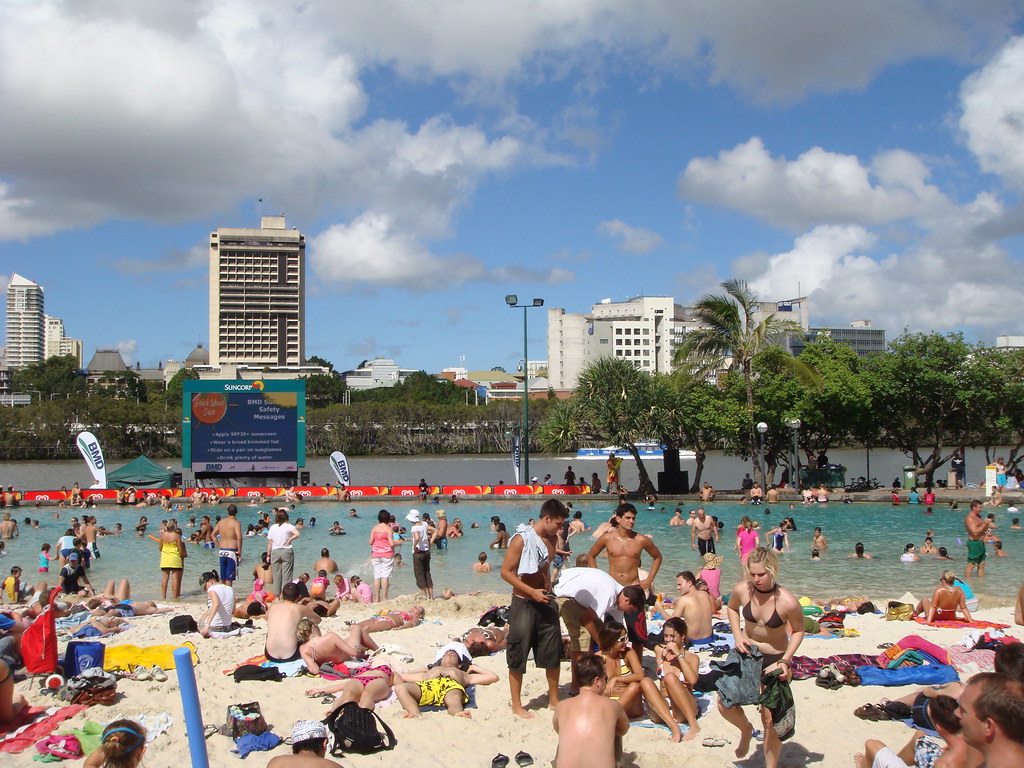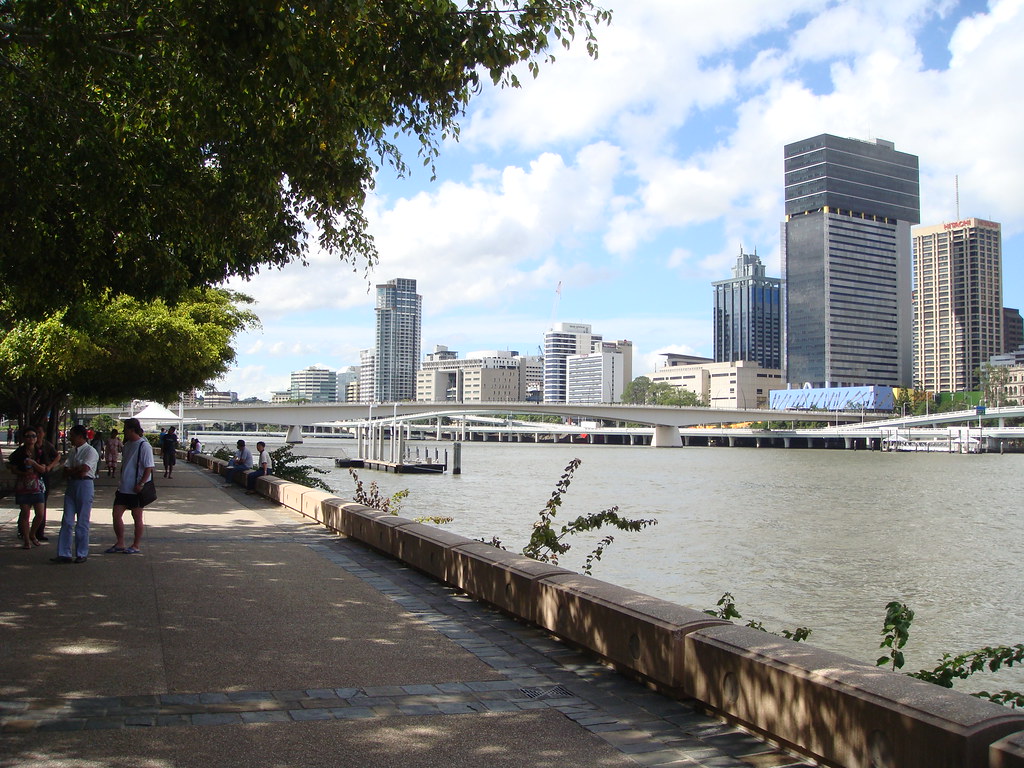
I haven’t lived in Brisbane for eight years. This was the city where I went to University, started my first professional job and made the transition from school kid to adult. I learned a lot in the seven years I lived here and now I was back. I’m here for a two month job, just long enough to skip the worst of the London winter, but not long enough to miss my London too much, or so I hoped. It was going to be an interesting trip, hopefully a good one.
Brisbane is the capital city of Queensland, the state at the north east tip of Australia. It enjoys a sub tropical climate, with steamy hot summers and very mild winters. It’s a great place to lead an outdoor life, but in the not too distant past, Queensland was treated as a bit of a joke by the southern, more populated states. This was partly due to the twenty odd year rule by a very conservative government, headed by Sir Joh Bjelke Petersen. Queenslanders reveled in their conservative values, abundant sunshine and lack of anything resembling culture. In many ways, it was a social backwater that saw all the best and brightest citizens fleeing south to Sydney, Melbourne or overseas.
The standard joke growing up goes like this: “What’s the difference between Queensland and yoghurt”, to which the answer was “Yoghurt has an active culture”. I remember that eating on tables outside a restaurant on the street was banned as it was unhygienic. By the time I arrived in 1991, things had started to change. The conservative government had been tossed out and was busy being grilled by the Fitzgerald Royal Commission, which laid bare the endemic corruption of the State. Given a fresh start, Queenslanders were keen to catch up with the southern states.
By the time I left Brisbane for London in 2000, the city had come a long way. There was a thriving restaurant and café scene and a real buzz about the place. Coming back this year, I can see that this has continued. The Brisbane of 2008 is a completely different one to 1991. There are now restaurants on every corner, cafes in every street and a brand new museum of modern art. Eating outside is no longer banned, but actively encouraged – “al fresco” don’t you know. Indeed, the change has been so dramatic, that people from the southern states are moving to Brisbane in droves. They like the all round warm weather, outdoor lifestyle and the smaller size of the city.
The city has a lot going for it. Before I left, I lived in the bohemian suburb of New Farm. Traditionally, it had been a very poor neighborhood, full of drugs, prostitutes and crime. When I moved in, it was started to undergo a renaissance. I moved into a brand new apartment block, one of the first to be built in the suburb. New Farm is right on the edge of the business district, so it only took me 20 minutes to walk to work if I fancied the exercise.
Down the end of my street, was a rather disgusting sugar factory. On the wrong day of the week, I’d come home and find my balcony smothered in thick black dust, not the best for the lungs. Right next to the factory was a derelict power station, full of ghosts, vandals and delinquents. It was no longer cutting edge, but New Farm was still pretty grotty and on the edges of respectability.
Today, the suburb is almost unrecognizable. Everywhere, there are huge apartment blocks. Every old warehouse is now luxury loft accommodation. The old sugar factory is now extremely exclusive, hugely expensive apartments. So exclusive, that the former mayor moved in. Even the power station has had a facelift. It’s now the very salubrious Powerhouse Art and Culture precinct. Not a delinquent in site! They’ve kept the graffiti though, as it’s rather cool. The insides were left untouched, so 20 years of graffiti are there for the world to see. Gone are the prostitutes hanging around in the daytime. In their place are herds of young mothers pushing prams around shopping, eating at cafes and popping into art galleries.
Another major improvement has been the transportation. When I left, Brisbane was all but grid locked every morning and evening. It’s still not the best, but at least it’s still moving. A series of dedicated bus lanes have been built all over the city, making travel by bus quick and easy.
The most popular change though, has been the City Cats. Brisbane sits on a river, rather banally called the Brisbane River. The early settlers weren’t the most imaginative lot. Gliding up and down the river are very impressive, very fast catamaran ferries. They glide from one end of the city to the other. Did I mention they’re fast? Amazingly so. They’re also relatively cheap and give you a great view of the city. They’re so popular, that on weekends, people buy a ticket and stay on board for hours at a time, enjoying the sunshine and the views. OK, so you have to be a bit of a ferry enthusiast to do that, but it is a fun ride.
The most tourist friendly part of Brisbane is the South Bank. Up until the 1980’s, this was the home of some pretty dodgy warehouse, houses of ill repute and basically anything not legal in the city. In a stroke of genius, it was decided to host the world trade expo on the site in 1988 – “World Expo 88”. It was a tremendous success. It was probably the one event that shook Brisbane out of it’s sense of complacency and made people realize that perhaps Brisbane could be a vibrant, modern city, rather than just a “big country town” as it always seemed.
After lying vacant for quite a while after Expo 88, the site was reborn as a mixed used recreation space. Today, it’s covered in trees, shops, picnic areas, restaurants, apartments, offices and everything else you can poke a stick at. It’s a triumph of urban planning and enjoyed enormously by locals and tourists alike.
The best feature of South Bank is the pool. That’s a strange thing to say, but you need to see it. Brisbane is unique in the capital cities of Australia in that it is not on the coast. The city it actually miles and miles inland from the sea. It sits on the first site of fresh water inland from the sea, so that’s where the city was built. This means, there are no beaches, which is a very odd thing for Australia. The solution? Build a fake beach in the middle of the city!
The pool at South Bank is actually a series of artificial lagoons, complete with white sandy beaches, palm trees and life savers. It’s raised above the river, so given the right angle, all you see is the pool then the river behind it, creating a great illusion that you’re on the beach. On a summer’s day, it’s hugely popular, mostly with the locals. It’s also free, which probably has a lot to do with the popularity. People come here for a fun day in the same way that Sydney-siders go to Bondi. It’s not as big, is even more crowded, but it has much less sharks!
Coming back, I must say I’m very impressed with how the city has changed. While it may not have the critical mass of Sydney or Melbourne, it has a lot of vitality. The locals no longer think they’re living in a backwater, mainly because they’re not. A lot of people are migrating here and I can see why – it’s a great place to live!
Does this mean I’ll me moving back to live in Brisbane? Hell no! It may be an up and coming bustling city, but it’s still no London. That, I think, is why people like it so much.
Monday, February 4, 2008
Brisbane – The Voyage Home
Subscribe to:
Post Comments (Atom)







No comments:
Post a Comment